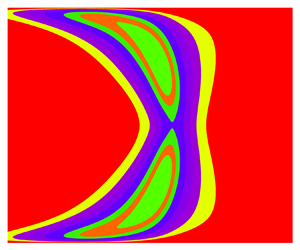Published online by Cambridge University Press: 07 February 2023

Composite sweeping-enhanced resolvents, referred to as the  ${\boldsymbol {R}}_s^2$ model, are proposed to predict the space–time statistics of large-scale structures in turbulent channel flows. This model incorporates two key mechanisms: (i) eddy damping is introduced to represent random sweeping decorrelation caused by nonlinear forcing, leading to a sweeping-enhanced resolvent
${\boldsymbol {R}}_s^2$ model, are proposed to predict the space–time statistics of large-scale structures in turbulent channel flows. This model incorporates two key mechanisms: (i) eddy damping is introduced to represent random sweeping decorrelation caused by nonlinear forcing, leading to a sweeping-enhanced resolvent  ${{\boldsymbol {R}}_s}$; and (ii) the sweeping-enhanced resolvent
${{\boldsymbol {R}}_s}$; and (ii) the sweeping-enhanced resolvent  ${{\boldsymbol {R}}_s}$ is composited into its iterations
${{\boldsymbol {R}}_s}$ is composited into its iterations  ${\boldsymbol {R}}_s^2$ to yield non-zero Taylor time microscales. The resulting
${\boldsymbol {R}}_s^2$ to yield non-zero Taylor time microscales. The resulting  ${\boldsymbol {R}}_s^2$ model can correctly predict the frequency spectra and two-point cross-spectra of large-scale structures. This model is compared numerically with eddy-viscosity-enhanced resolvent models. The latter are designed to represent energy transfer instead for time decorrelation, and thus underpredict the characteristic decay time scales. The
${\boldsymbol {R}}_s^2$ model can correctly predict the frequency spectra and two-point cross-spectra of large-scale structures. This model is compared numerically with eddy-viscosity-enhanced resolvent models. The latter are designed to represent energy transfer instead for time decorrelation, and thus underpredict the characteristic decay time scales. The  ${\boldsymbol {R}}_s^2$ model correctly yields the characteristic decay time scales in turbulent channel flows.
${\boldsymbol {R}}_s^2$ model correctly yields the characteristic decay time scales in turbulent channel flows.